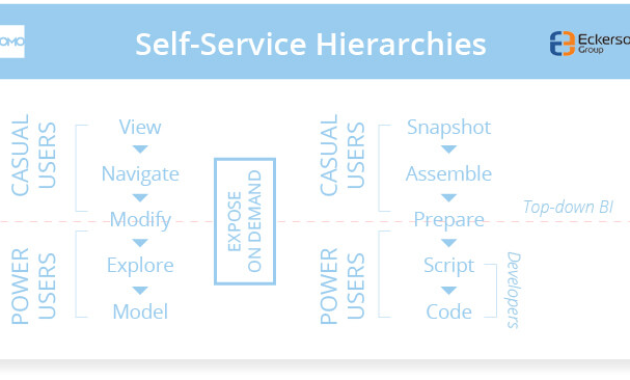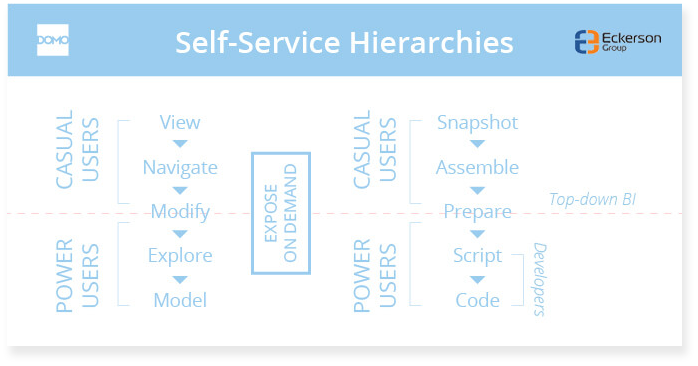
Create Clarity with Self-Service Business Intelligence Software: Empowering Data-Driven Decisions
In today’s data-saturated world, businesses are drowning in information. However, the true challenge lies not in collecting data but in understanding it. This is where self-service business intelligence (BI) software comes into play. It empowers users to analyze data independently, fostering a culture of data-driven decision-making. This article delves into the power of self-service business intelligence software. We’ll explore its benefits, features, and how it can transform your organization. This is done by creating clarity from the noise.
The Rise of Data and the Need for Clarity
The volume of data generated globally is staggering. Every click, transaction, and interaction leaves a digital footprint. This data holds immense potential, offering insights into customer behavior, market trends, and operational efficiency. But without the right tools, this data remains untapped, a collection of meaningless numbers. Traditional BI solutions often required specialized skills and IT support. This created bottlenecks and limited access to data insights. Self-service business intelligence software addresses these limitations. It puts the power of data analysis directly into the hands of business users.
What is Self-Service Business Intelligence Software?
Self-service business intelligence software is a type of BI that allows users to access, analyze, and visualize data without relying heavily on IT or data science experts. It provides intuitive interfaces, drag-and-drop functionality, and pre-built templates. Users can quickly create reports, dashboards, and visualizations to gain insights. This empowers them to explore data, identify trends, and make informed decisions. This contrasts with older systems that required extensive coding knowledge. These systems were also difficult to manage.
Key Features of Self-Service BI Software
- Data Connectivity: Connects to various data sources, including databases, spreadsheets, cloud services, and more.
- Data Preparation: Cleans, transforms, and prepares data for analysis.
- Data Visualization: Creates interactive charts, graphs, and dashboards to represent data visually.
- Reporting and Analysis: Generates reports, analyzes trends, and identifies key performance indicators (KPIs).
- Collaboration and Sharing: Allows users to share insights, collaborate on reports, and discuss findings.
- Mobile Access: Enables access to data and dashboards on mobile devices.
Benefits of Implementing Self-Service BI
Implementing self-service business intelligence software offers numerous benefits, transforming how organizations operate. It allows for quicker, more informed decisions.
- Faster Decision-Making: Users can access and analyze data in real-time, enabling faster decision-making.
- Improved Data Literacy: Empowers business users to understand data and make data-driven decisions.
- Reduced Reliance on IT: Frees up IT resources, allowing them to focus on other critical tasks.
- Increased Efficiency: Automates reporting and analysis tasks, saving time and resources.
- Better Business Insights: Uncovers hidden trends, patterns, and opportunities within the data.
- Enhanced Collaboration: Fosters collaboration and knowledge sharing across departments.
- Cost Savings: Reduces the need for specialized analysts and consultants.
How Self-Service BI Creates Clarity
Self-service business intelligence software cuts through the noise of raw data. It transforms complex information into understandable insights. Here’s how it achieves this:
- Data Visualization: Transforms raw numbers into visually appealing charts and graphs. This allows users to quickly grasp trends and patterns.
- Interactive Dashboards: Provides interactive dashboards that allow users to explore data and drill down into details.
- Ad-hoc Reporting: Enables users to create custom reports based on their specific needs.
- Data Exploration: Allows users to explore data freely, uncovering hidden insights.
Choosing the Right Self-Service BI Software
Selecting the right self-service business intelligence software is crucial for success. Consider the following factors:
- Ease of Use: The software should have an intuitive interface and drag-and-drop functionality.
- Data Connectivity: Ensure the software can connect to your existing data sources.
- Data Visualization Capabilities: Look for a wide range of chart types and customization options.
- Reporting and Analysis Features: The software should offer robust reporting and analysis tools.
- Collaboration Features: Consider features that enable collaboration and knowledge sharing.
- Scalability: The software should be able to handle your growing data volumes.
- Security: Ensure the software has robust security features to protect your data.
Implementation Best Practices
Successful implementation of self-service business intelligence software requires careful planning. Follow these best practices:
- Define Your Goals: Clearly define your business objectives and the key metrics you want to track.
- Assess Your Data: Understand your existing data sources and data quality.
- Choose the Right Software: Select software that meets your specific needs and requirements.
- Provide Training: Train your users on how to use the software effectively.
- Establish Governance: Implement data governance policies to ensure data accuracy and consistency.
- Monitor and Evaluate: Continuously monitor the performance of your software and make adjustments as needed.
Examples of Self-Service BI in Action
Many businesses are already leveraging self-service business intelligence software to gain a competitive edge. Here are a few examples:
- Retail: Retailers use BI to analyze sales data, track inventory levels, and personalize customer experiences.
- Healthcare: Healthcare providers use BI to monitor patient outcomes, optimize resource allocation, and improve operational efficiency.
- Finance: Financial institutions use BI to detect fraud, manage risk, and improve investment decisions.
- Marketing: Marketers use BI to track campaign performance, analyze customer behavior, and personalize marketing efforts.
The Future of Self-Service BI
The future of self-service business intelligence software is promising. Expect to see continued innovation and advancements. These include:
- Artificial Intelligence (AI) Integration: AI-powered features, such as automated insights and predictive analytics.
- Natural Language Processing (NLP): The use of natural language to query data and generate reports.
- Enhanced Data Governance: Improved data governance features to ensure data accuracy and consistency.
- Increased Mobile Accessibility: Greater access to data and dashboards on mobile devices.
Conclusion: Embracing Data-Driven Decisions
Self-service business intelligence software is no longer a luxury. It is a necessity for businesses that want to thrive in today’s data-driven world. By empowering users to analyze data independently, organizations can create clarity. They can make more informed decisions, and gain a competitive advantage. Embrace the power of self-service business intelligence software. Transform your organization into a data-driven powerhouse. This is achieved by fostering a culture of data literacy and empowering your team to make informed decisions. The benefits are clear. The path to clarity begins with the right tools and a commitment to data-driven decision-making. [See also: Choosing the Right BI Tool for Your Business]

